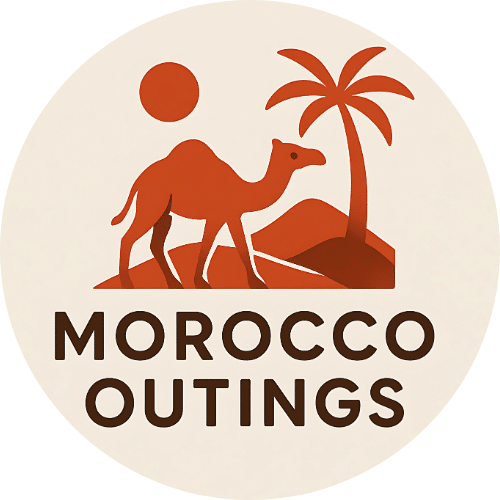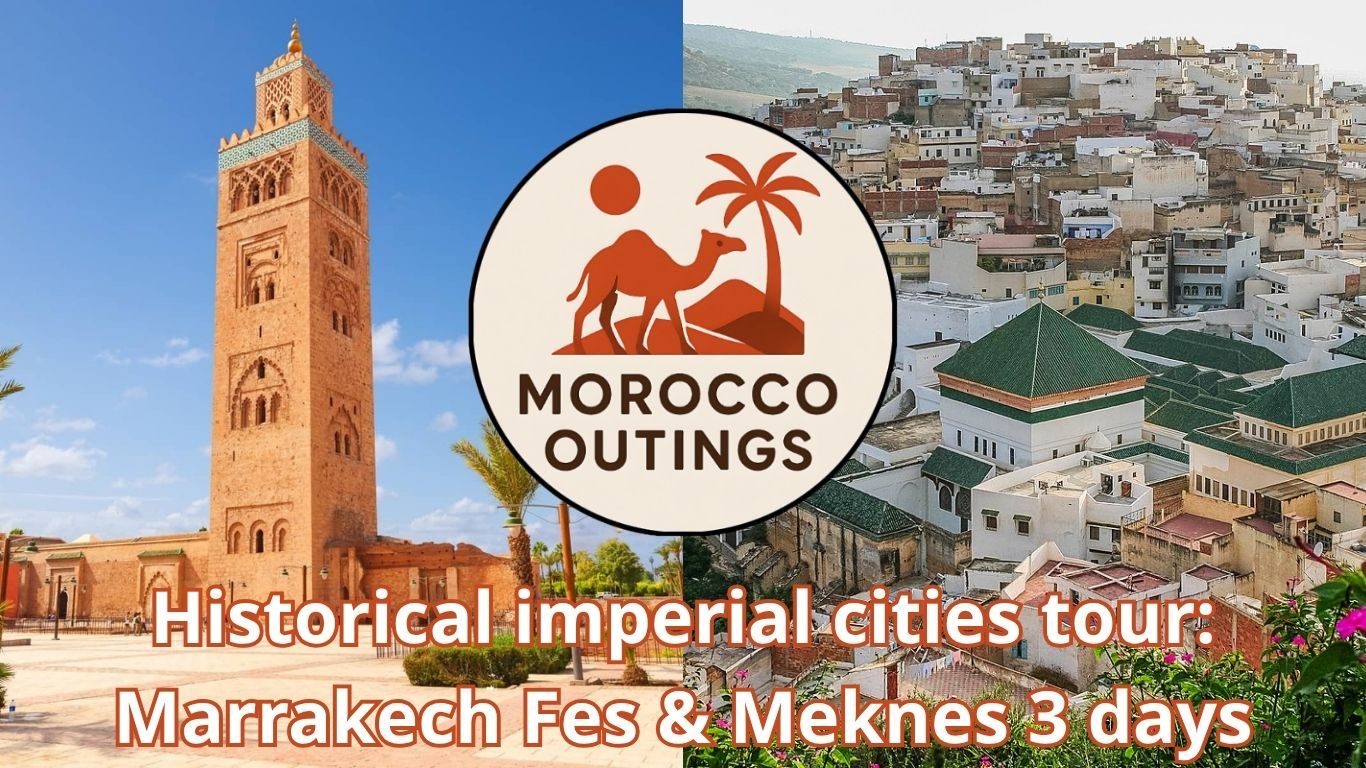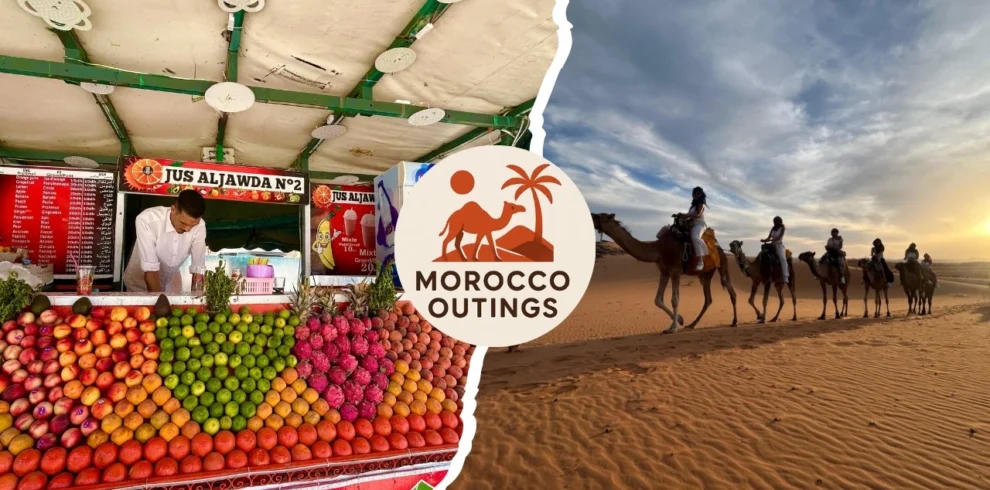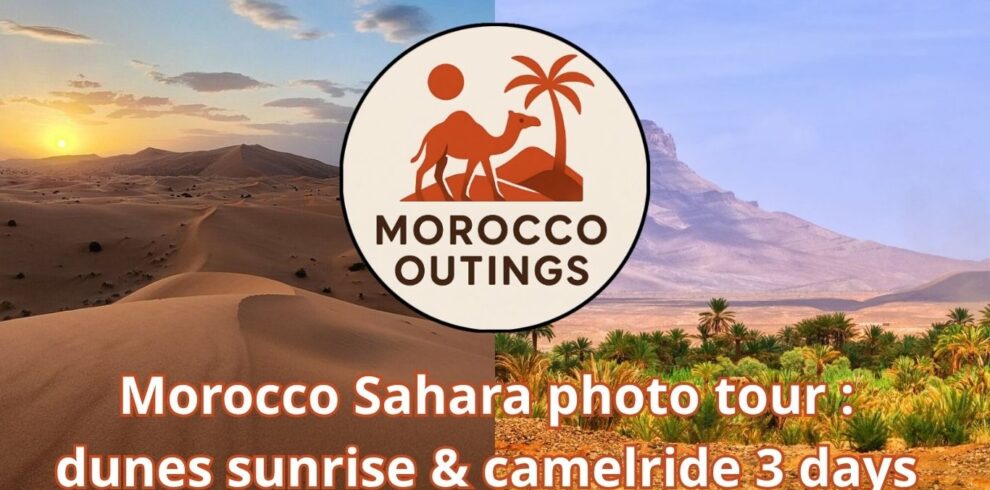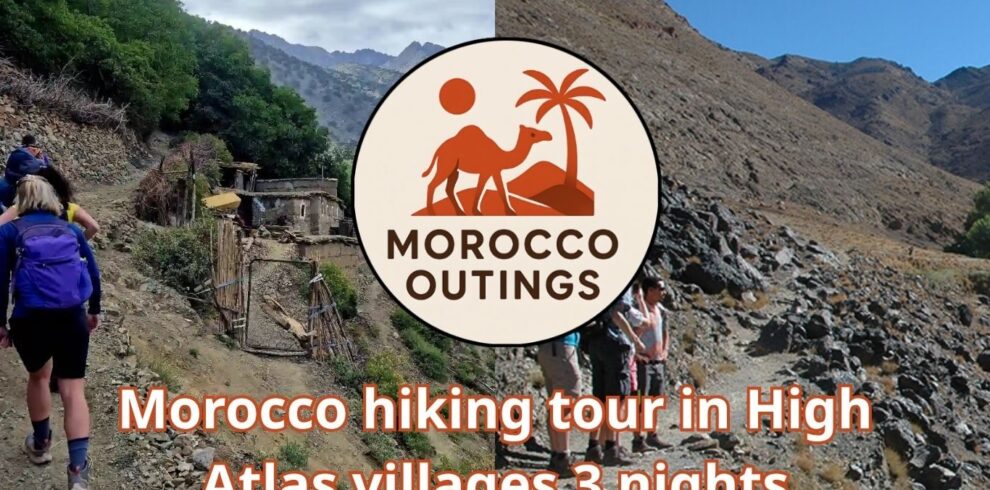Historical Imperial Cities Tour: Marrakech, Fes & Meknes offers travelers a unique journey through Morocco’s most iconic and culturally rich destinations. From the bustling streets of Marrakech to the spiritual heart of Fes and the imperial grandeur of Meknes, this 3-day tour immerses you in the history, architecture, and traditions of Morocco’s legendary cities. Each day is designed to combine cultural exploration, architectural discovery, and authentic local experiences, ensuring a seamless blend of adventure and learning.
On Day 1, your journey begins in Marrakech, where a guided Medina exploration introduces you to narrow winding streets, vibrant souks, and the intricate craftsmanship of local artisans. You will also visit majestic palaces and historical gardens, providing insight into Morocco’s royal heritage and architectural elegance. The day concludes with a traditional Moroccan welcome dinner, offering an authentic taste of local cuisine while soaking in the city’s lively atmosphere.
Day 2 leads to Fes, a city renowned for its ancient medersas, mosques, and artisan quarters. During the guided city tour, you will walk through the labyrinthine streets of Fes el-Bali, discovering centuries-old educational institutions, bustling markets, and the colorful tanneries where leather is dyed using traditional methods. Panoramic views from Mount Zalagh allow travelers to appreciate the city’s sprawling historic skyline, creating perfect moments for reflection and photography.
On Day 3, the tour explores Meknes and the nearby Volubilis ruins, combining imperial history with archaeological fascination. Visit the iconic Bab Mansour gate, wander through Moulay Idriss town, and immerse yourself in the grandeur of Roman civilization at Volubilis. The day includes a farewell lunch featuring local delicacies before returning to Marrakech, leaving travelers with lasting memories of Morocco’s imperial cities, cultural heritage, and architectural wonders.
This Historical Imperial Cities Tour is meticulously crafted for those seeking a deep cultural immersion, historical insight, and unforgettable encounters with Morocco’s timeless traditions.
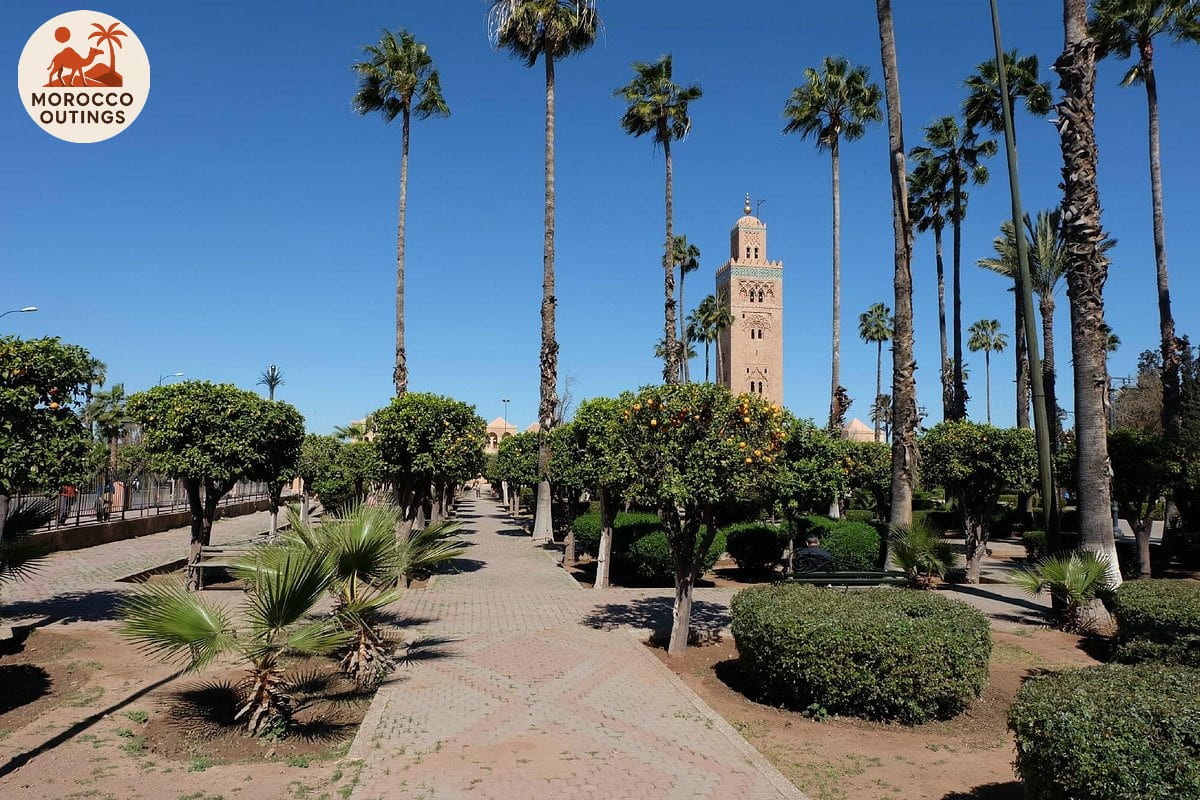
Historical Imperial Cities Tour: Marrakech, Fes & Meknes – 3 Days
Tour Overview
Discover Morocco’s imperial heritage on the Historical Imperial Cities Tour: Marrakech, Fes & Meknes – 3 Days. Explore majestic palaces, bustling medinas, ancient madrasas, and Roman ruins while immersing yourself in authentic Moroccan culture. Visit iconic imperial landmarks, wander traditional souks, and enjoy panoramic views of historic cities and scenic countryside villages. This itinerary blends history, architecture, and local experiences for a rich cultural adventure.
Detailed Itinerary
| Day | Activity | Details |
|---|---|---|
| Day 1 | Marrakech: Gateway to the Imperial Past | Guided tour of the medina, exploring majestic palaces and traditional souks. Learn about the city’s imperial history and architectural heritage while enjoying local cultural insights. Evening leisure to experience the vibrant atmosphere of Marrakech. |
| Day 2 | Fes: The Spiritual & Cultural Heart of Morocco | Explore ancient madrasas and artisan quarters, witnessing centuries-old craftsmanship. Enjoy panoramic hilltop views over the historic city while learning about Fes’ spiritual and cultural significance. Experience local markets and interact with artisans for a hands-on cultural experience. |
| Day 3 | Meknes & Volubilis: Legacy of Empires | Visit iconic imperial landmarks in Meknes and explore the well-preserved Roman ruins of Volubilis. Scenic drives through the countryside villages provide insight into local life and historic trade routes. Conclude with a cultural reflection on Morocco’s imperial legacy before returning to Marrakech or Fes. |
What’s Included:
2 nights accommodation in boutique riads or traditional hotels
Private air-conditioned transportation and airport transfers
Licensed guide for medina tours, palace visits, and historical insights
Guided visits to medina, palaces, madrasas, and Volubilis ruins
Traditional Moroccan meals during the tour
Photography opportunities and cultural storytelling sessions
What’s Not Included:
International flights to/from Morocco
Personal drinks, additional snacks, and souvenirs
Optional activities not listed in the itinerary
Travel insurance (recommended)
Tips for guides and hotel staff
Day 1 – Marrakech: Gateway to the Imperial Past
Morning Arrival – Welcome & Safety Orientation
Your adventure begins in the vibrant city of Marrakech, the historical gateway to Morocco’s imperial past. Upon arrival at Marrakech Menara Airport, you are greeted by your professional guide who provides a warm welcome and a detailed safety orientation. During this briefing, travelers receive essential information regarding walking through the Medina, staying hydrated in the warm climate, and following local customs to ensure a safe and respectful journey.
A comfortable transfer brings you to your riad or hotel in the heart of the city. Before heading out, the guide outlines the day’s itinerary, emphasizing the cultural, historical, and architectural highlights you will explore. Breakfast or a light refreshment is served, featuring Moroccan delicacies such as mint tea, freshly baked bread, and local jams, preparing you for a full day of exploration.
Medina Exploration – Navigating Historic Streets Safely
The first stop is a guided tour of the Medina, a UNESCO World Heritage site. The narrow streets and bustling alleyways offer a sensory immersion into Morocco’s urban fabric. Your guide ensures the group stays together, highlighting safe pathways and advising on navigating the busy areas to avoid congestion or confusion.
During the tour, you encounter historic fountains, riads, and city squares, each representing centuries of Moroccan culture. The guide explains the historical significance of the Medina, including its design principles, traditional architecture, and the role of marketplaces in urban life. Travelers have the opportunity to observe artisans at work, from coppersmiths to ceramic painters, gaining insight into centuries-old craftsmanship techniques.
This section combines cultural education and experiential learning, allowing visitors to understand the social and economic heartbeat of historic Marrakech while maintaining personal safety through guided supervision.
Majestic Palaces – Architectural Splendor & Historical Insight
Next, the journey leads to some of Marrakech’s majestic palaces, including notable sites such as the Bahia Palace and the El Badi Palace ruins. Each palace visit is carefully timed to avoid crowds, ensuring a comfortable experience. Your guide narrates the architectural and historical context, pointing out intricate mosaic work, carved wood ceilings, and ornate gardens that reflect Morocco’s royal artistry.
Travelers explore the palaces’ inner courtyards and halls, learning about the lives of sultans and the significance of these buildings in Morocco’s imperial history. Photography is encouraged in designated areas, and the guide emphasizes respect for cultural norms, including modest attire and behavior, preserving the integrity of these historic sites.
The visit to the palaces combines awe-inspiring visuals with cultural storytelling, enhancing your appreciation for the fusion of Islamic, Moorish, and local Berber architectural elements.
Traditional Souks – Markets of Color, Spice & Craftsmanship
Following the palaces, the tour continues through the traditional souks of Marrakech, where merchants display vibrant textiles, leather goods, pottery, and aromatic spices. Your guide ensures safety by leading the group along less congested lanes, advising on etiquette, and highlighting reputable artisans to interact with.
Visitors learn how the souks function as a living economy, with trades passed down through generations. Opportunities to engage with vendors include textile demonstrations, spice sampling, and pottery crafting sessions. Travelers can purchase souvenirs such as handwoven rugs, leather poufs, and argan oil, always with guidance on fair negotiation practices to maintain authenticity and respect.
The souks offer a full sensory experience: the colors, scents, and sounds provide an immersive understanding of Moroccan commerce and culture while being carefully navigated for comfort and security.
Lunch Break – Traditional Moroccan Cuisine
A midday pause allows for a traditional Moroccan lunch, often served in a local riad or courtyard restaurant. Guests enjoy dishes such as tagine with vegetables or lamb, couscous, and freshly baked bread, accompanied by Moroccan mint tea. Dietary preferences and restrictions are accommodated with advance notice.
During lunch, the guide shares insights into Moroccan culinary traditions, including regional variations and the cultural significance of shared meals. This break also provides a moment to relax and reflect on the morning’s experiences, ensuring that everyone remains energized for the afternoon’s itinerary.
Afternoon Cultural Walk – Gardens & Hidden Gems
After lunch, the group explores Marrakech’s historic gardens, such as the Majorelle Garden, a serene retreat showcasing exotic plants, fountains, and vibrant blue architecture. The guide explains the garden’s history, botanical highlights, and its role in Marrakech’s artistic heritage.
Travelers walk along shaded pathways, practicing mindfulness and appreciating the contrast between bustling city streets and tranquil garden spaces. Safety measures include staying on designated paths, monitoring children and older travelers, and maintaining group cohesion.
This leisurely stroll reinforces the cultural and aesthetic richness of Marrakech, providing an intimate connection with the city’s history and artistry.
Evening Moroccan Welcome – Dinner & Reflection
As the day concludes, the group gathers for an evening Moroccan welcome dinner at a traditional riad. The meal typically includes multi-course Moroccan cuisine, featuring salads, tagine, couscous, and sweet pastries. Live entertainment, such as Andalusian music or local storytellers, enhances the cultural immersion.
The guide reviews the day’s highlights, ensuring participants have understood the historical and cultural context of each visited site. Travelers are encouraged to share reflections, photos, and experiences, fostering a sense of connection and community.
This evening provides a safe, comfortable environment to wind down while celebrating the first day of your Historical Imperial Cities Tour.
End of Day Reflection – Safety, Culture & Anticipation
Day 1 concludes with guests returning to their riad, reflecting on the rich architectural, historical, and cultural experiences encountered. Travelers feel a sense of accomplishment while resting safely, preparing for the journey ahead to Fes and Meknes.
The combination of guided tours, cultural immersion, and meticulous attention to safety ensures that the exploration of Marrakech’s medina, palaces, and souks is both enriching and secure. By the end of the day, visitors have gained a profound appreciation for Morocco’s imperial heritage and are ready for the next stage of their adventure.
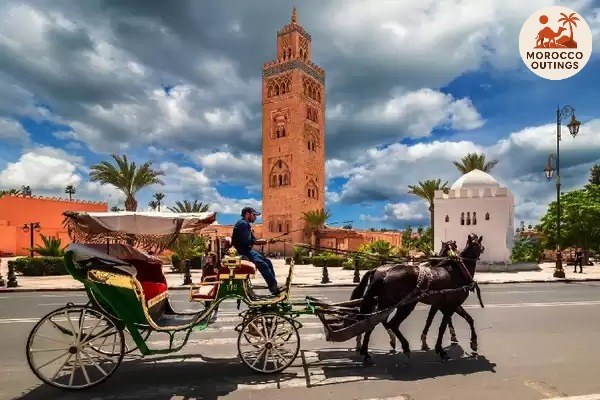
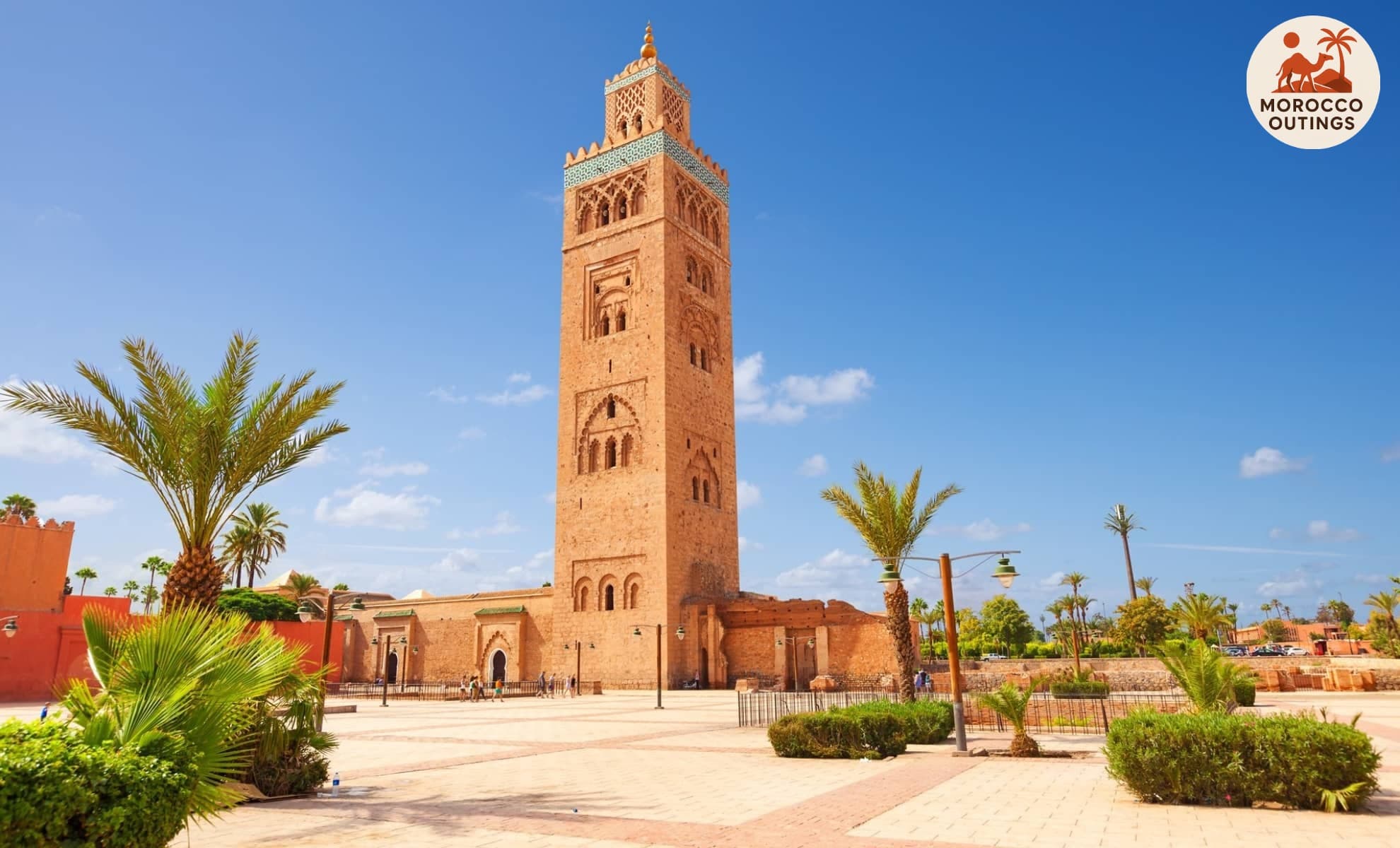
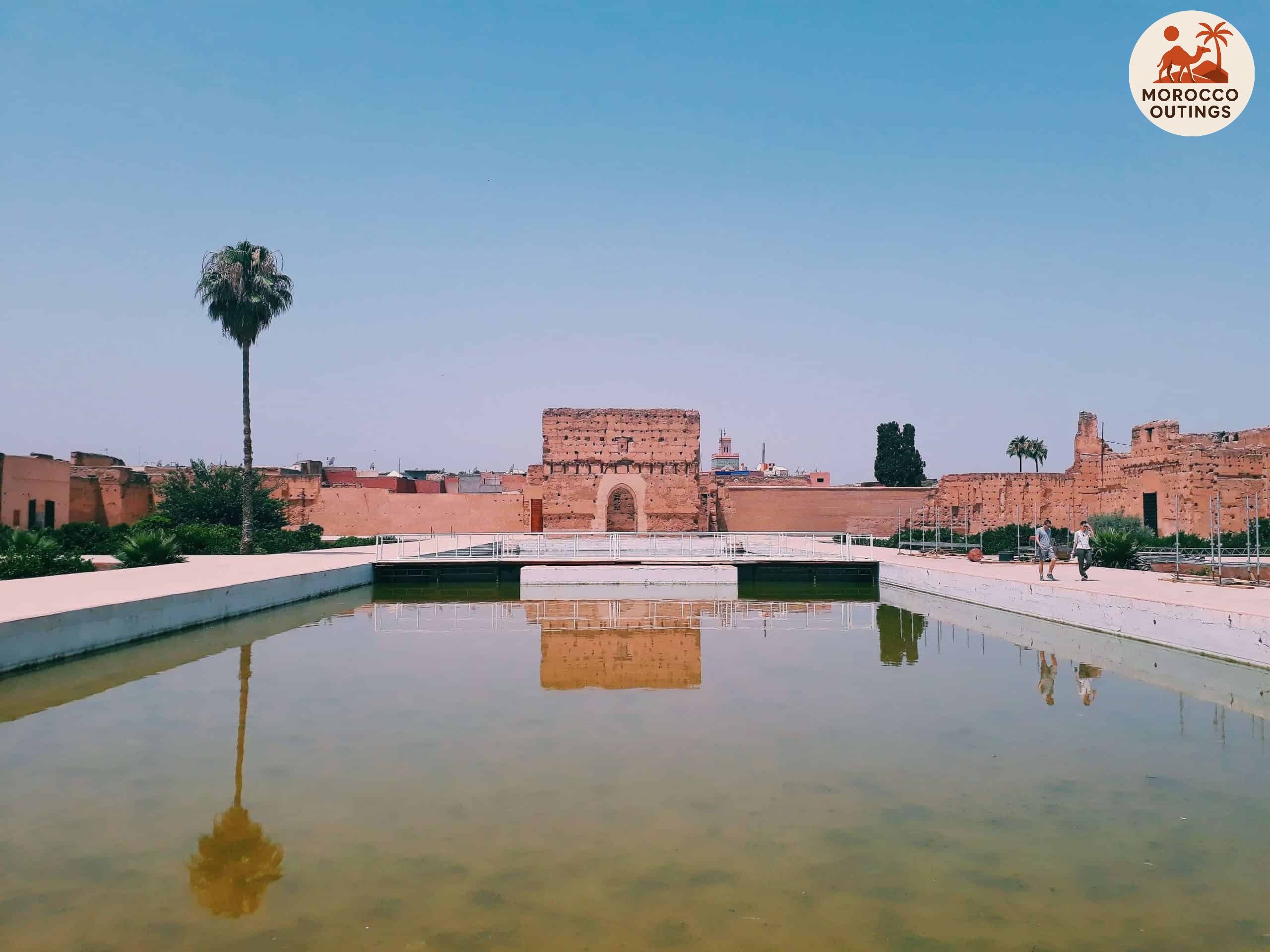
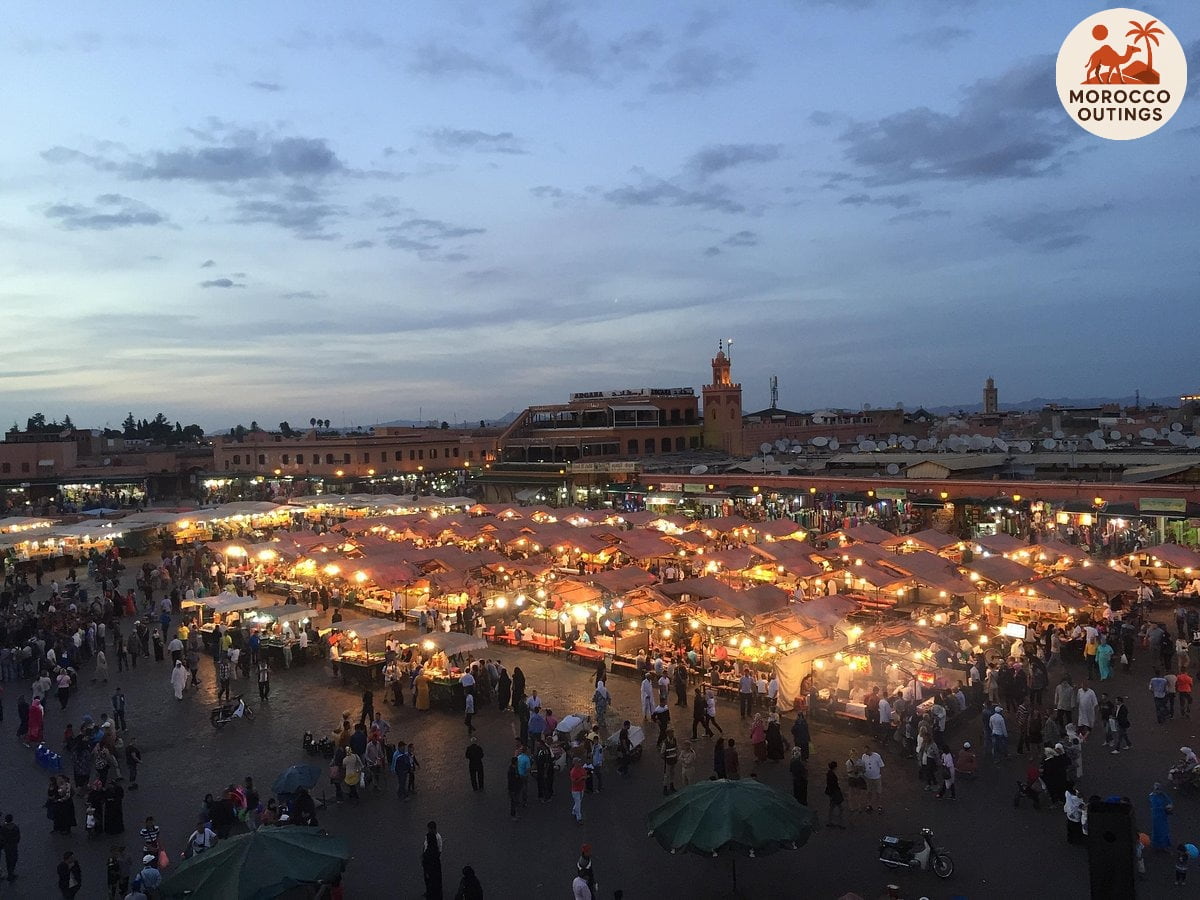
Day 2 – Fes: The Spiritual & Cultural Heart of Morocco
Morning Departure – Safe Transfer & Preparation
The day begins with a scenic transfer from Marrakech to Fes, ensuring comfort and safety. Travelers are briefed on travel protocols, including seatbelt use, hydration, and the expected schedule. During the journey, your guide provides a historical overview of Morocco’s imperial cities, highlighting Fes as the spiritual and cultural heart of Morocco. This prelude sets the context for the rich experiences awaiting in the city.
Upon arrival, luggage is secured at a central riadhotel, allowing for a light orientation and refreshment break. The guide reiterates safety instructions for exploring the medina, emphasizing navigating crowded alleyways, group cohesion, and respectful interaction with locals. This preparation ensures that travelers are both comfortable and informed as they embark on the day’s explorations.
Fes el-Bali – Ancient Streets & Historical Landmarks
Your journey into Fes begins with a guided walking tour of Fes el-Bali, the ancient walled city and UNESCO World Heritage site. The maze-like streets, bustling markets, and towering minarets are navigated under the careful supervision of your guide to ensure safety and orientation.
Highlights include visits to iconic gates, centuries-old fountains, and bustling squares that showcase the city’s urban rhythm. Travelers learn the significance of the medina’s layout, communal spaces, and traditional markets, gaining insight into the daily life of centuries past. The guide points out historical structures, including residential riads and sacred mosques, explaining architectural techniques and religious influences.
Careful attention is given to footwear and crowd management, as some streets are narrow and heavily trafficked. Stops are strategically timed for rest and photography, ensuring a comfortable and enriching experience.
Ancient Madrasas – Centers of Knowledge & Artistry
The next stop is the ancient madrasas of Fes, including the renowned Bou Inania and Al-Attarine Madrasas. These educational institutions offer a glimpse into Moroccan Islamic architecture, craftsmanship, and scholarly traditions.
Travelers are guided through courtyards adorned with zellij tiles, carved wooden ceilings, and intricately painted stucco, learning about the educational and spiritual significance of these centers. Photography is permitted in designated areas, while maintaining respectful behavior and silence to honor the sanctity of the sites.
The guide explains historical anecdotes about students, teachers, and the evolution of Islamic education in Morocco. Visitors can appreciate the meticulous artisan work, from mosaics to arabesque carvings, deepening their understanding of Fes’s cultural heritage.
Artisan Quarters – Traditional Crafts & Local Economy
After exploring the madrasas, the tour continues into Fes’s artisan quarters, including areas renowned for leather tanning, pottery, and metalwork. The guide leads the group through safe pathways, avoiding the busiest alleyways while allowing full immersion into the local craft culture.
Travelers observe skilled artisans at work, including leather dyeing in traditional tanneries, pottery shaping, and copper engraving. The guide provides context on the historical and economic significance of each craft, explaining how these trades have been preserved over centuries.
Opportunities to engage respectfully include trying simple craft techniques, witnessing dyeing processes, or purchasing authentic handmade items. The guide ensures that interactions remain safe, culturally sensitive, and enriching, fostering a genuine connection with the local community.
Lunch Break – Traditional Fassi Cuisine
A midday stop offers a traditional Fassi lunch at a local riad or restaurant. Dishes may include pastilla, harira soup, tagine, and couscous, accompanied by mint tea and fresh bread. Travelers are encouraged to sample regional flavors while learning about Moroccan culinary traditions.
During lunch, the guide discusses local ingredients, cooking methods, and dining etiquette, adding depth to the gastronomic experience. Adequate time is provided to rest and refresh, ensuring participants are energized for the afternoon itinerary.
Panoramic Hilltop Views – Cityscape & Reflection
In the afternoon, the tour ascends to a panoramic viewpoint overlooking Fes, offering breathtaking views of Fes el-Bali’s skyline, terracotta rooftops, and minarets. This scenic stop allows travelers to absorb the city’s layout and historical context, providing perspective on its vast medina.
Safety measures include guided movement along secure pathways, railings, and monitoring group spacing to prevent slips or falls. Here, visitors are encouraged to capture photographs, reflect on the day’s experiences, and appreciate the city from above, blending visual enjoyment with historical appreciation.
Evening Stroll & Cultural Interaction
As the sun begins to set, the group walks through quieter streets of the medina, engaging in cultural interactions with shopkeepers and residents in a controlled and respectful manner. The guide emphasizes etiquette, safety, and mindfulness in all exchanges.
This final stroll provides a sense of the living culture of Fes, combining sensory immersion with learning. The sounds of daily life, the aroma of spices, and the sight of artisans closing their shops create a dynamic yet safe environment for exploration.
Return to Accommodation – Reflection & Preparation
Day 2 concludes with a safe return to the riadhotel, where travelers have time to relax, freshen up, and reflect on their experiences. The guide reviews the next day’s itinerary to Meknes, ensuring that all participants are informed and prepared for the upcoming journey.
Evening dinner may be enjoyed on the rooftop terrace of the riad, offering views of Fes’s skyline at night, accompanied by traditional Moroccan dishes. Travelers share stories, review photographs, and reflect on the deep cultural, spiritual, and historical insights gained throughout the day.
End of Day Reflection – Immersive Learning & Safety
Day 2 of the Historical Imperial Cities Tour leaves participants with a profound understanding of Fes’s spiritual and cultural heritage. Every visit—from ancient madrasas to artisan quarters and panoramic viewpoints—was structured with careful attention to safety, group cohesion, and cultural respect.
By the end of the day, travelers feel immersed, informed, and inspired, having experienced the living traditions of Morocco’s imperial cities. This foundation prepares them for the final day in Meknes and Volubilis, completing the journey through Morocco’s historical heartlands.
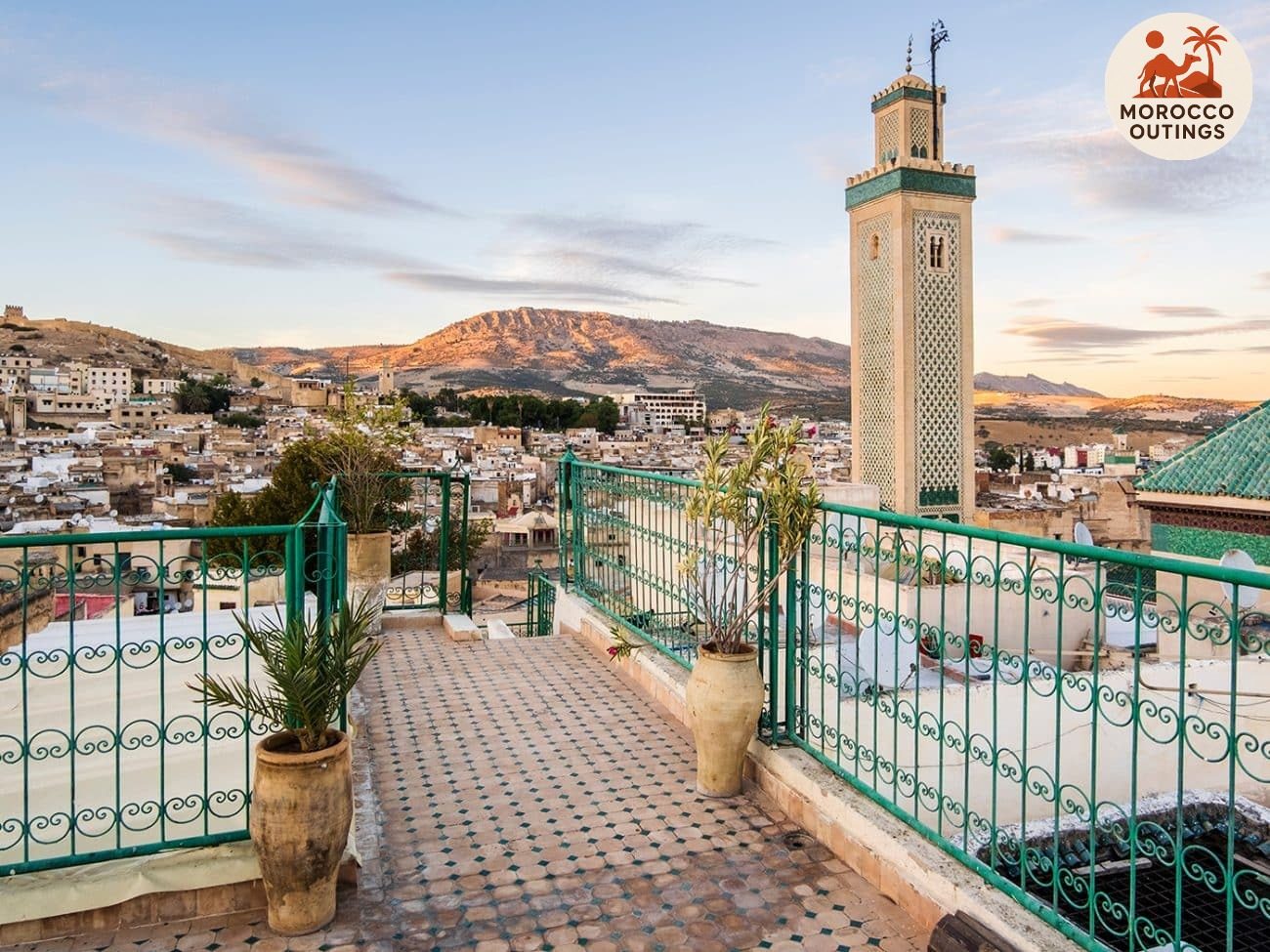

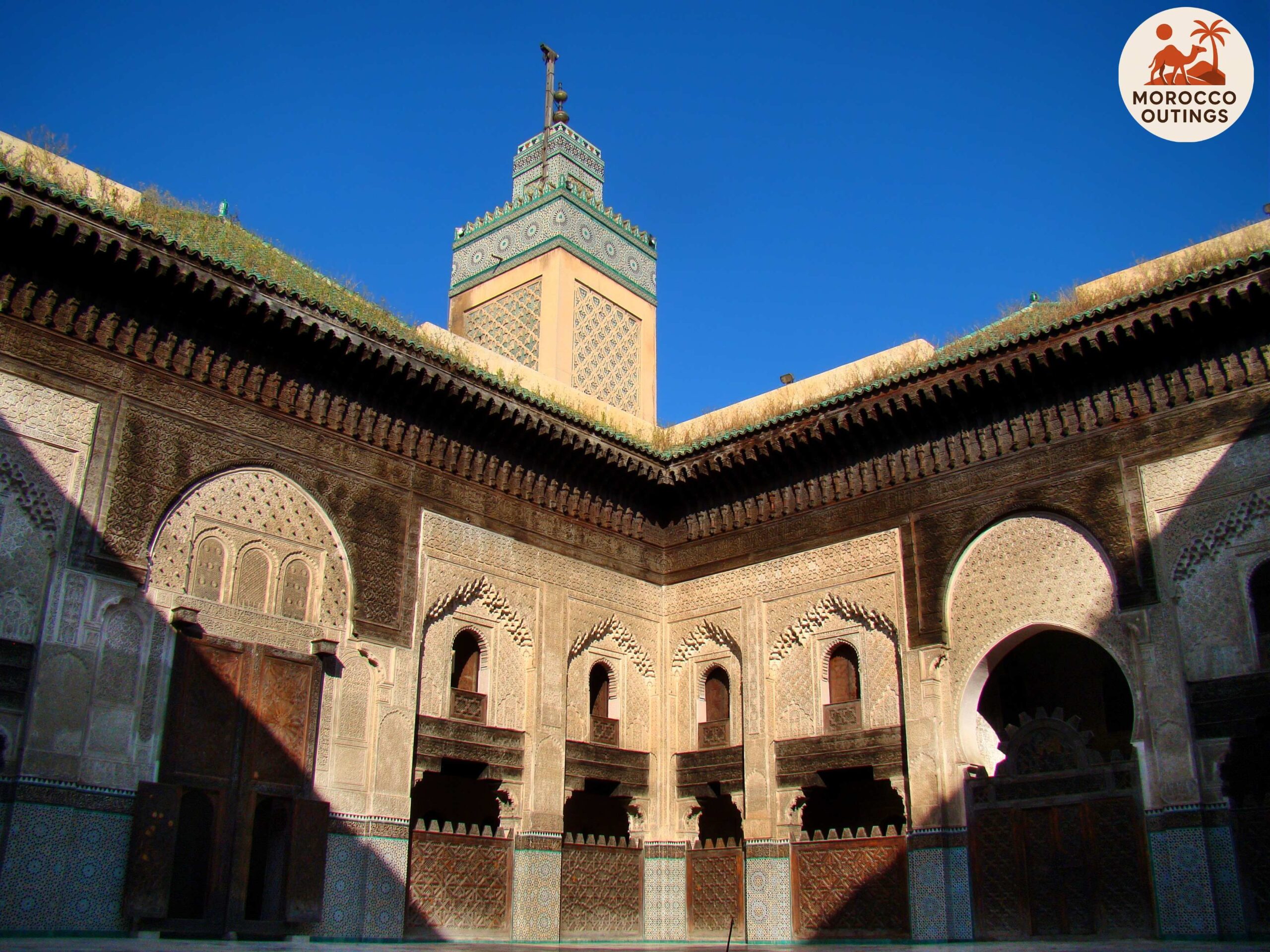
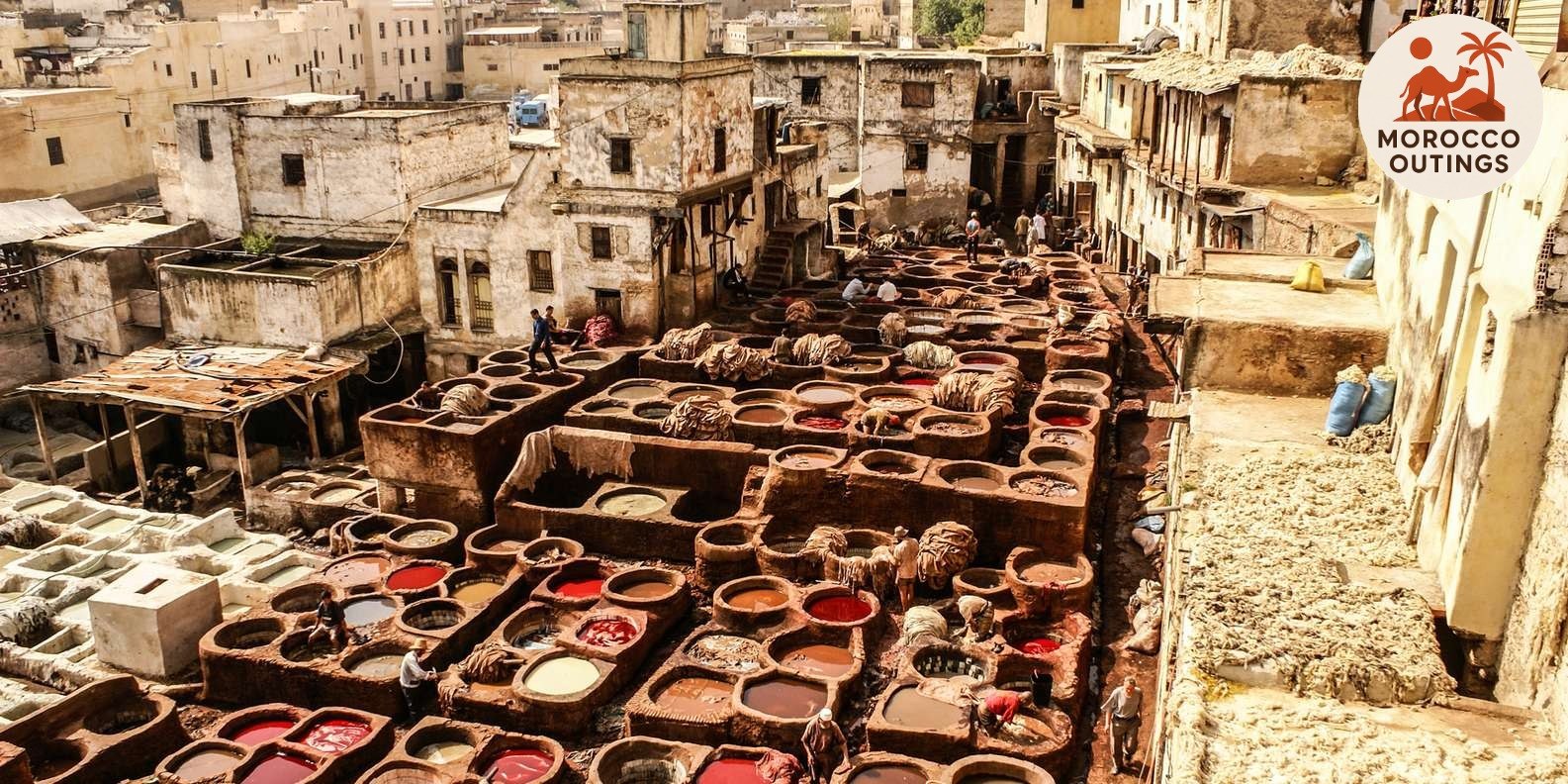
Day 3 – Meknes & Volubilis: Legacy of Empires
Morning Departure – Safe Journey to Meknes
Day 3 begins with a comfortable transfer from Fes to Meknes, approximately 1.5 hours through the scenic Moroccan countryside. Travelers are briefed on safety measures for the road journey, including seatbelt use, hydration, and keeping personal belongings secure. The guide provides a historical overview of Meknes, highlighting its imperial significance, architectural heritage, and connections to Morocco’s dynastic history.
As the vehicle winds through olive groves and rolling hills, participants are encouraged to enjoy the panoramic landscapes, capturing early morning photographs. The journey sets the tone for a day focused on imperial legacy, Roman history, and cultural immersion, ensuring travelers are prepared for both walking tours and guided site visits.
Meknes Imperial Landmarks – Bab Mansour & Royal Monuments
Upon arrival in Meknes, the tour begins with a visit to Bab Mansour, one of Morocco’s most iconic gates. The guide ensures that visitors navigate safely around the open courtyards and bustling areas, providing historical context on the gate’s construction, architectural details, and its role in imperial processions.
The exploration continues through Dar El Makhzen (Royal Palace) surroundings, where travelers observe ornate facades, historical stables, and the grand layout of the former imperial complex. The guide narrates stories of Sultan Moulay Ismail, offering insights into his reign and the strategic urban planning of Meknes. Travelers are encouraged to take photos from designated vantage points while respecting restricted areas to ensure safety and cultural respect.
This segment combines visual grandeur with historical education, highlighting the imperial legacy that defines Meknes as a city of monumental heritage.
Volubilis Roman Ruins – Archaeological Exploration
Next, the group is transferred to the Volubilis Roman ruins, a UNESCO World Heritage site approximately 30 minutes from Meknes. Upon arrival, safety protocols are reiterated, especially regarding walking on uneven ancient stones, loose gravel, and elevated platforms.
The guided archaeological tour takes participants through the well-preserved mosaics, basilicas, triumphal arches, and remnants of Roman villas. The guide explains the significance of Volubilis in the Roman Empire, detailing its governance, trade, and daily life in antiquity. Travelers are encouraged to observe the intricate mosaic patterns, column capitals, and fresco remains, gaining a tangible sense of history.
Educational discussions include insights into Roman engineering, urban design, and the blend of local Berber and Roman cultures, allowing travelers to appreciate how the site connects ancient heritage with the surrounding Moroccan landscape. Short breaks provide opportunities to rest and take panoramic photographs of the countryside, ensuring a balanced mix of activity and reflection.
Moulay Idriss Village – Cultural & Scenic Experience
After exploring Volubilis, the tour continues to Moulay Idriss, a hilltop village known for its religious and historical significance. Travelers navigate cobblestone streets under the guidance of their tour leader, maintaining safety while observing the village’s whitewashed houses, minaret, and terraced layout.
The guide explains the historical and spiritual importance of Moulay Idriss, including its role in early Moroccan Islam and as a pilgrimage site. Travelers have the opportunity to visit local markets and small artisan shops, observing traditional crafts and regional products. Interaction with locals is encouraged, with emphasis on respectful behavior, including asking permission before photography and polite greetings.
The village provides a stunning view of the surrounding plains, offering perspective on how Roman and Islamic histories intersected in this region. The combination of cultural immersion and scenic observation makes this stop a highlight of the day.
Lunch Break – Traditional Moroccan Fare
A midday stop allows for a traditional Moroccan lunch in Moulay Idriss or nearby Meknes. Meals typically include couscous, tagine, fresh salads, and sweet pastries, accompanied by Moroccan mint tea. Travelers are briefed on local dining etiquette and encouraged to sample the regional specialties.
This break provides rest, hydration, and reflection time, ensuring participants are energized for the afternoon’s activities. The guide uses this moment to discuss the morning’s historical sites, reinforcing learning and preparing travelers for the final sightseeing experiences.
Scenic Countryside Villages – Immersive Rural Experience
Post-lunch, the tour drives through the Moroccan countryside, visiting small rural villages along the way back to Meknes. Travelers are guided through safe walking paths to observe traditional Berber homes, agricultural terraces, and local markets.
The guide highlights the interplay of history and modern rural life, explaining traditional irrigation, farming methods, and community structures. Participants experience the authenticity of Moroccan village life while practicing responsible tourism, avoiding disruption to residents and maintaining group safety.
Photography stops allow for capturing the countryside vistas, village streets, and local landscapes, providing memories of Morocco beyond the well-known imperial landmarks.
Evening Farewell in Meknes – Reflection & Departure
As the day concludes, travelers gather for a farewell dinner in Meknes, enjoying regional specialties and mint tea in a traditional setting. The guide leads a reflection session, reviewing the historical insights from Bab Mansour, Volubilis, and Moulay Idriss, and discussing connections between Morocco’s imperial past and contemporary culture.
Travelers are encouraged to share experiences, photographs, and personal reflections, fostering a sense of closure and accomplishment. Safety is ensured during the return transfer to accommodation or onward transportation, with staff assisting in luggage handling and check-ins.
This evening reinforces the cultural, historical, and scenic richness of Meknes and the surrounding imperial landscape, leaving participants with lasting impressions of Morocco’s legacy of empires, Roman heritage, and rural authenticity.
End of Tour Reflection – Historical Immersion & Safety
By the end of Day 3, travelers have experienced a full spectrum of Morocco’s imperial history, from majestic city gates to ancient Roman ruins and picturesque hilltop villages. Each segment of the day was meticulously designed for safety, educational value, and cultural immersion, ensuring participants gained profound understanding while remaining comfortable and secure.
The Historical Imperial Cities Tour concludes with travelers carrying lasting memories, knowledge, and photographs of Morocco’s rich heritage, ready to depart with a deep appreciation for the imperial, Roman, and spiritual legacies encountered throughout the journey.

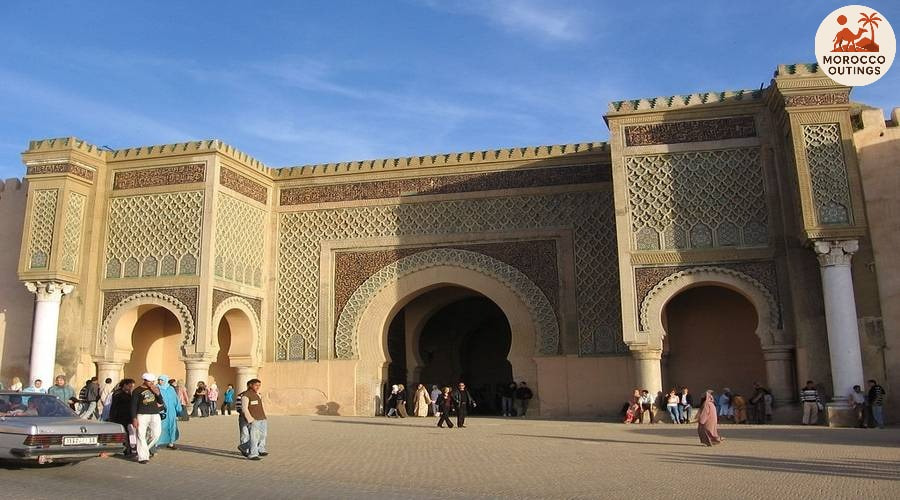
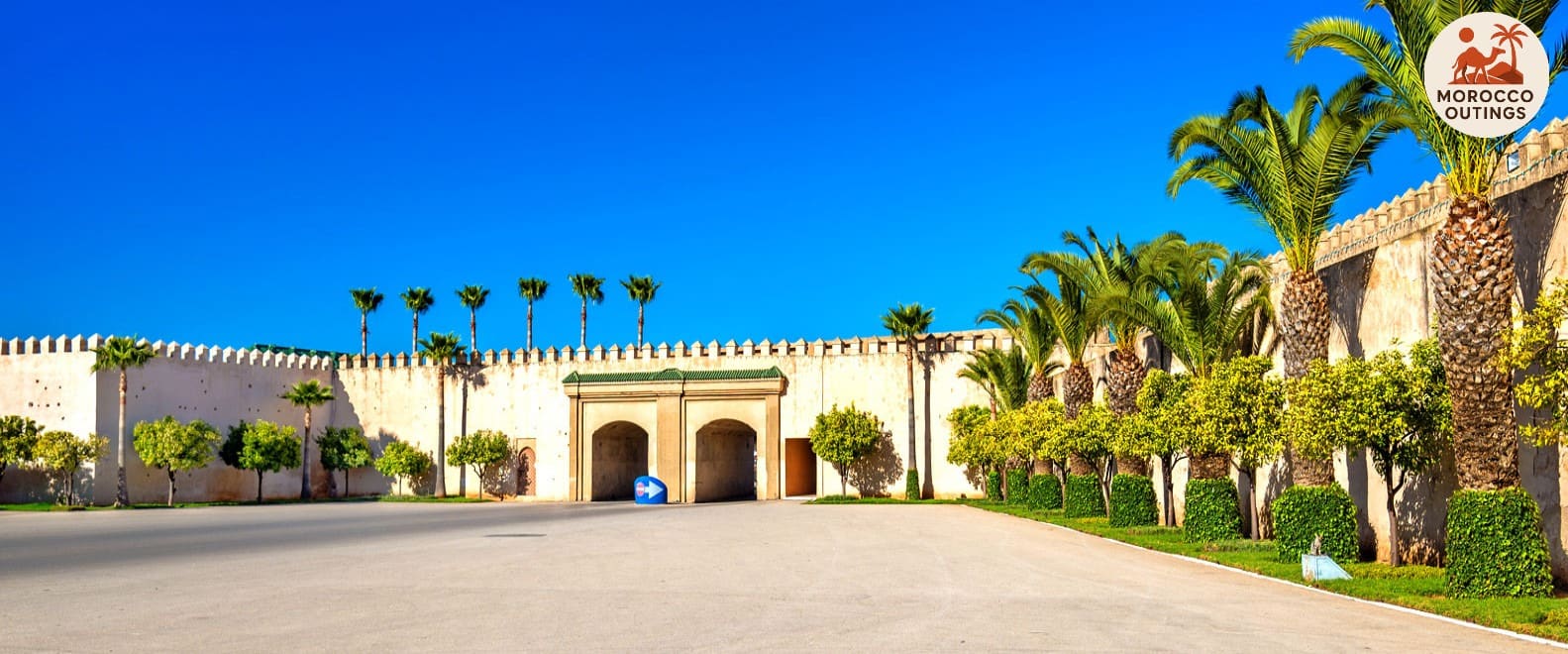
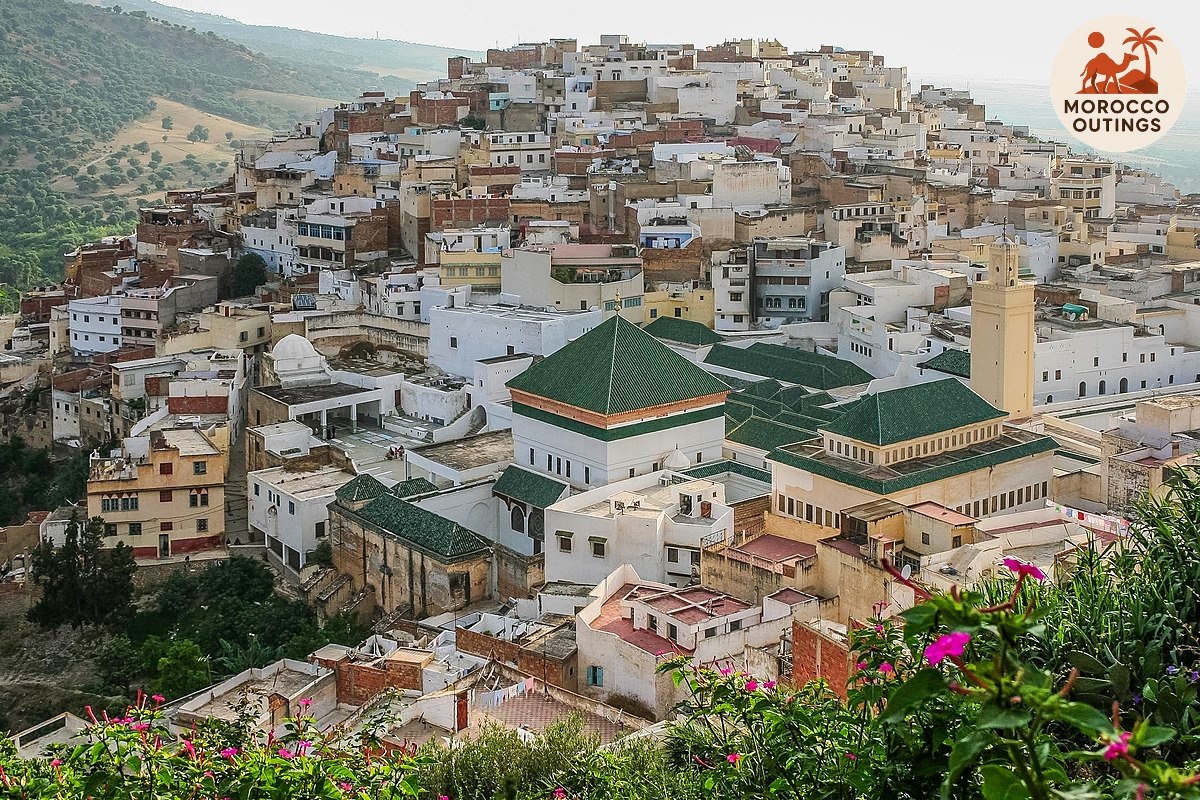
Travel Tips & Recommendations
-
Best time to visit: March–June and September–November for mild temperatures and clear skies.
-
Recommended fitness level: moderate, mostly walking and city exploration on uneven surfaces.
-
Wear comfortable walking shoes, layered clothing, and a light jacket for mornings and evenings.
-
Carry sun protection: hat, sunscreen, and sunglasses.
-
Stay hydrated; drink bottled or filtered water throughout the day.
-
Follow guide instructions when navigating crowded medinas and historical sites.
-
Respect local culture: ask before photographing locals, dress modestly, and greet with “Salam.”
-
Meals feature authentic Moroccan cuisine; dietary restrictions accommodated with prior notice.
-
Keep cash (MAD) handy for small purchases, tips, or local souvenirs.
-
Limited mobile coverage in some areas—embrace digital detox for full cultural immersion.
-
Photography encouraged at landmarks, madrasas, palaces, and scenic viewpoints, while respecting restricted areas.
-
Follow safety guidelines in archaeological sites such as Volubilis: watch your step and avoid climbing on ruins.
-
Engage with artisans respectfully, observing craftsmanship techniques without interfering with work.
-
Use hand sanitizer and hygiene practices in busy marketplaces.
-
Allow time for rest and reflection between city tours to avoid fatigue.
Book Your Journey Through Morocco’s Imperial Heritage!
Step into the heart of Morocco’s history with our Historical Imperial Cities Tour: Marrakech, Fes & Meknes – 3 Days. Discover ancient medinas, majestic palaces, artisan quarters, and Roman ruins, all guided by expert local historians and cultural interpreters.
Reserve your spot today to experience Morocco like never before — from the bustling souks of Marrakech to the spiritual alleys of Fes and the imperial grandeur of Meknes.
Spaces are limited to ensure a personalized and immersive experience, so secure your adventure now and create lasting memories of Morocco’s timeless cities.
